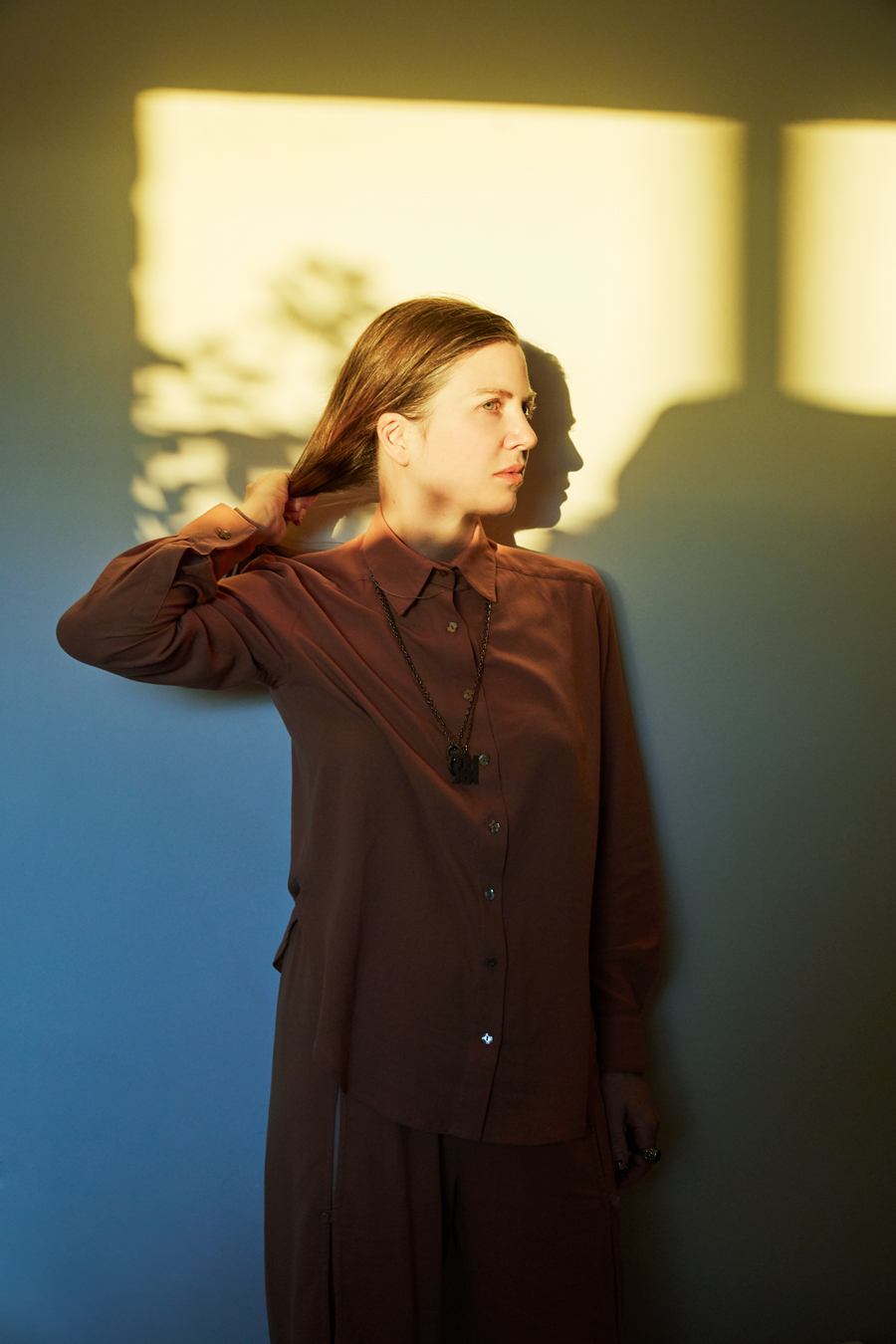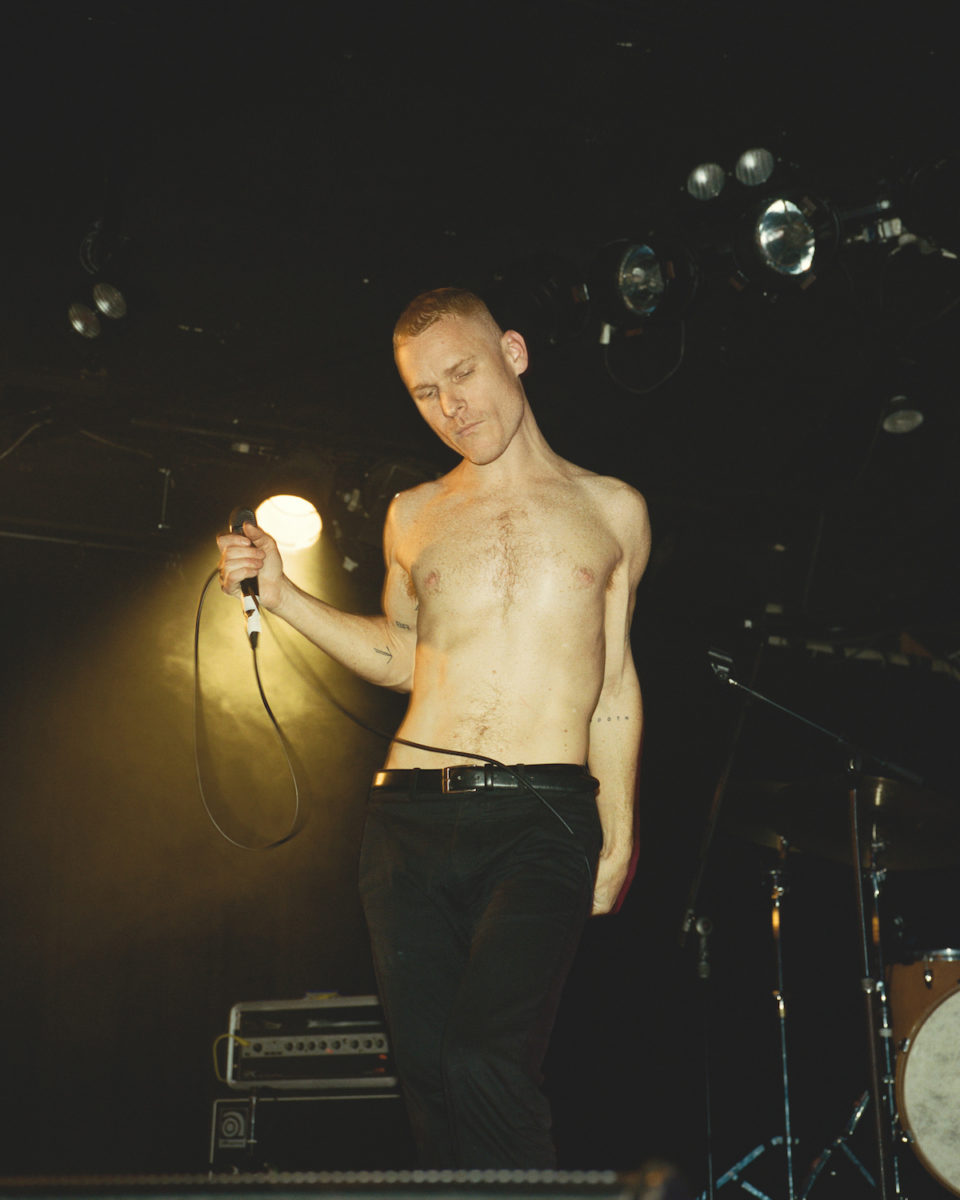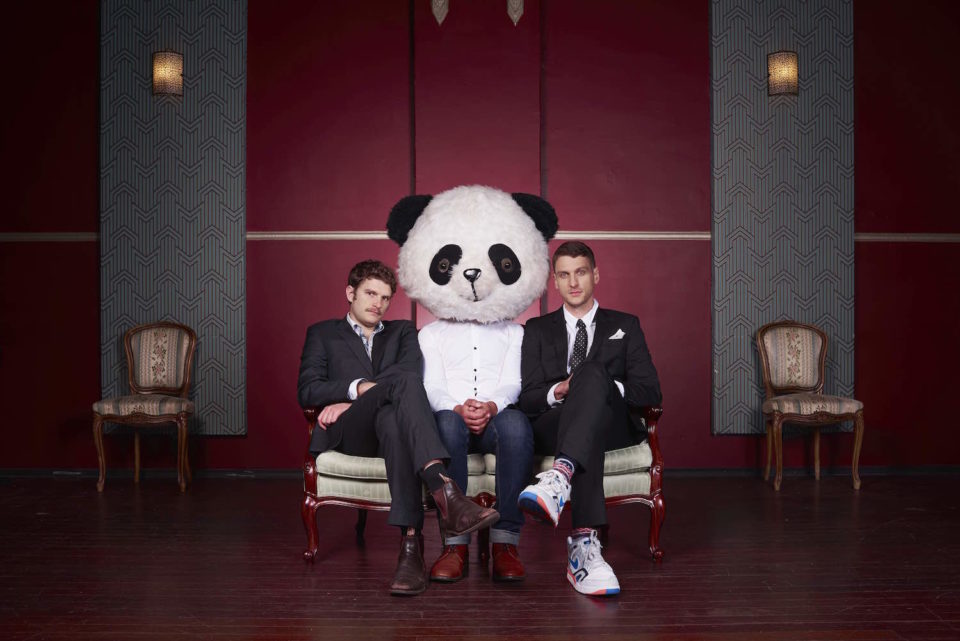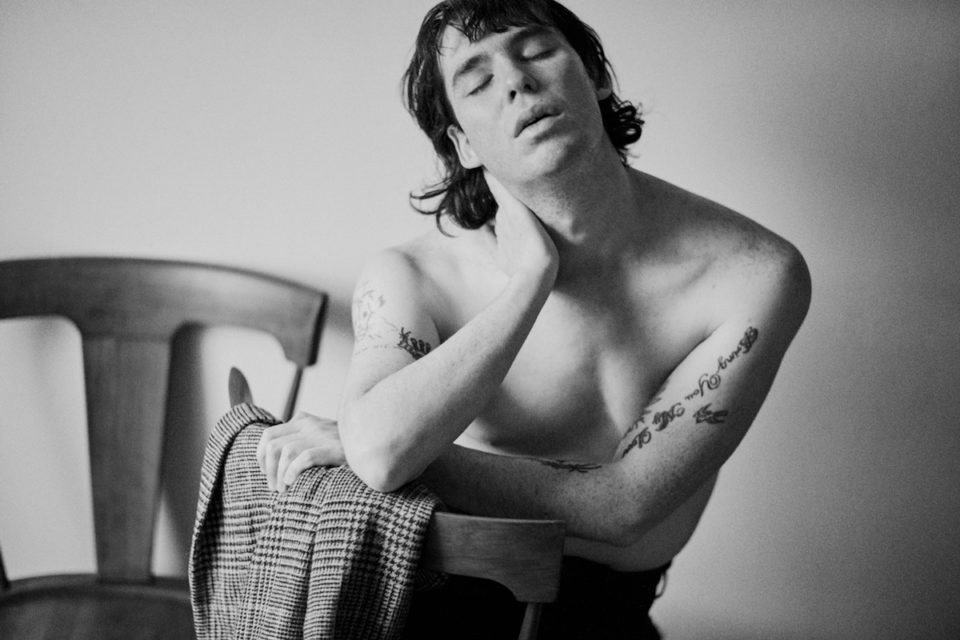What is a ghost? An emotion in your memory that persists into the present? A past trauma doomed to repeat itself? Something dead, that’s simply trying to stay alive?
A conversation with polymath Jonnine Standish – musician, art director, designer, performer, and half of electronic duo HTRK, one of the most consistently captivating Australian bands of the last 15 years – conjures up some of the ghosts that have haunted her life. Most recently Standish is the co-creator of Ghost Train, a new carnival ride with a difference that makes its debut as part of Sydney Festival 2018, playing until 28 January.
With Ghost Train, Standish and co-creative director, filmmaker Jasmin Tarasin, use virtual reality to augment the fairground experience, placing participants in a three-dimensional world that combines film, music and animation, and moves beyond thrills and scares to explore more philosophical themes. While it’s true that the existential elements of Ghost Train resonate with the circumstances of Standish’s own life, the same could be said for most of us, which is the whole point of the work.
“I had the initial idea a long time ago in 2009, I think even earlier because I’ve always loved ghost trains,” she says. “As a kid I loved how transformative they were, without doing too much damage to you unlike, say, rollercoasters, which are too much for me, can’t stand them. (With HTRK) over in Europe while touring, we’d go and find amusement parks and walk around to get fresh air and a feel for these cities that we barely saw. “It was one of those bonding moments between us all, the band and our tour manager, we were drunk and running around in Belgium or something and we jumped on a ghost train, screaming and joking and pinching each other, we had so much fun together.
“Then I thought about HTRK writing a score for a ghost train, transforming the experience through music. Over time I started to wonder, what if we transformed an entire ghost train? The visuals, the ride, the exterior, the whole experience… it’s a moving gallery, really, such an interesting format because you’re in a carriage with all the excitement of being on a ride but the audio and visual display can be anything you want it to be.”
It wasn’t until she met Jasmin Tarasin that the plans for Ghost Train came to fruition. “I would have been boring people with the idea for years to come, if it wasn’t for Jasmin,” says Standish, “but she believed in it and pushed it along with me. Jasmin is so perfect because she has such an assured aesthetic, which is a gothic Australian style. It’s beautiful, ethereal, haunting, but grounded in Australian landscape and culture.”
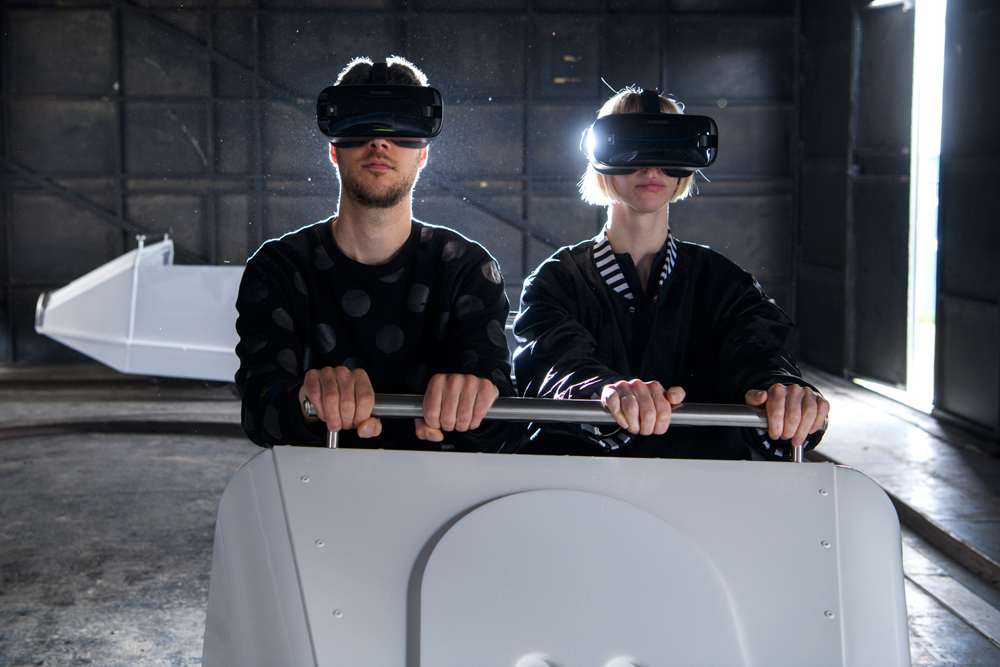
Ghost Train. Photography by Sarah Walker
So what should people expect from a ride on this Ghost Train? “When you hear the words ‘virtual reality’, you don’t expect to be on a large moving carriage,”she explains. “This is a big, physical ride… the kind of thing you’d see at a carnival, twenty four metres by fourteen metres. You get on a carriage and a headset is put over your eyes. You still see the carriage ride but wherever you look at is augmented with three-dimensional images.”
“The sensory technology that matches where you are on the track with what you’re seeing is as advanced as it gets, it’s a completely immersive experience. This allows us to take you to different worlds, on journeys that you, the participant, have an element of control over. Depending on where you look, you get to choose aspects of your own adventure. So instead of just scaring you at every corner, we can take you under the ocean, or through old houses or strange buildings, we have all this creative freedom and the environments are limitless… all a mixture of Jasmin’s 360 degree film and the computer generated animation we’ve created with VR artists Patrick Hamilton and Joe Hamilton. We take you travelling through rooms of the mind. You can go on the ride several times and not see the same thing”.
Music is a fundamental part of the Ghost Train experience and the project enabled Jonnine to work with one of her idols, “an absolute legend of electronic music, Mika Vainio, just before he passed away”.
“He and his group Pan Sonic were leaders in the field. Mika had come out to Australia a couple of years ago and (HTRK) played with him, we were huge fans, Mika was number one really. I mentioned the project and said I’d be honoured if he would consider doing the score for it. He looked quietly excited but the only thing he said was, ‘I love ghost trains.’ Mika was a man of few words but he really loved ghost trains and he made the most incredible piece of music for it, with so much passion, far exceeding our expectations. And together with his music are some new pieces from HTRK too, we’ve made some sections of music that soundtrack the various alternate endings you can experience on the ride.”
Alternate endings? “Ultimately everyone on the ride has to make a decision to go to purgatory or bliss, that’s the decision you make at the end. We wanted to be the first ghost train in history to have an option for a pleasant ending… to let you choose beauty if you want, not just fear. But that’s not to say we won’t scare you at other points in the ride when you’re getting too comfortable,” she laughs.
“The question we ask with Ghost Train is, how do we best cope with the ghosts that stay with us? A key theme is displacement. Displacement of country, of self, of family, work and friends. It asks questions of you about your displaced emotions. An example might be, maybe you were bullied at school… does that displaced fear and anger eventually manifest as something else? Does it eventually make you afraid of or angry at authority figures? Or even people who had nothing to do with it, like refugees or someone who just has different beliefs than you?”
“The ride is a lateral way of moving through a story with that theme, to make you think about your ghosts and your decisions. It’s pretty Freudian, there’s a lot of psychology at work; we fit a lot of very human stuff into a short carnival ride.”
“Contemporary mental health has been a hot topic for the whole team,” she continues, going on to individually name and credit each of the extensive team who helped realise the project. “Virtual reality versus real life, the ethics of spending time in the former at the expense of the latter is something we’ve all been thinking about too.”
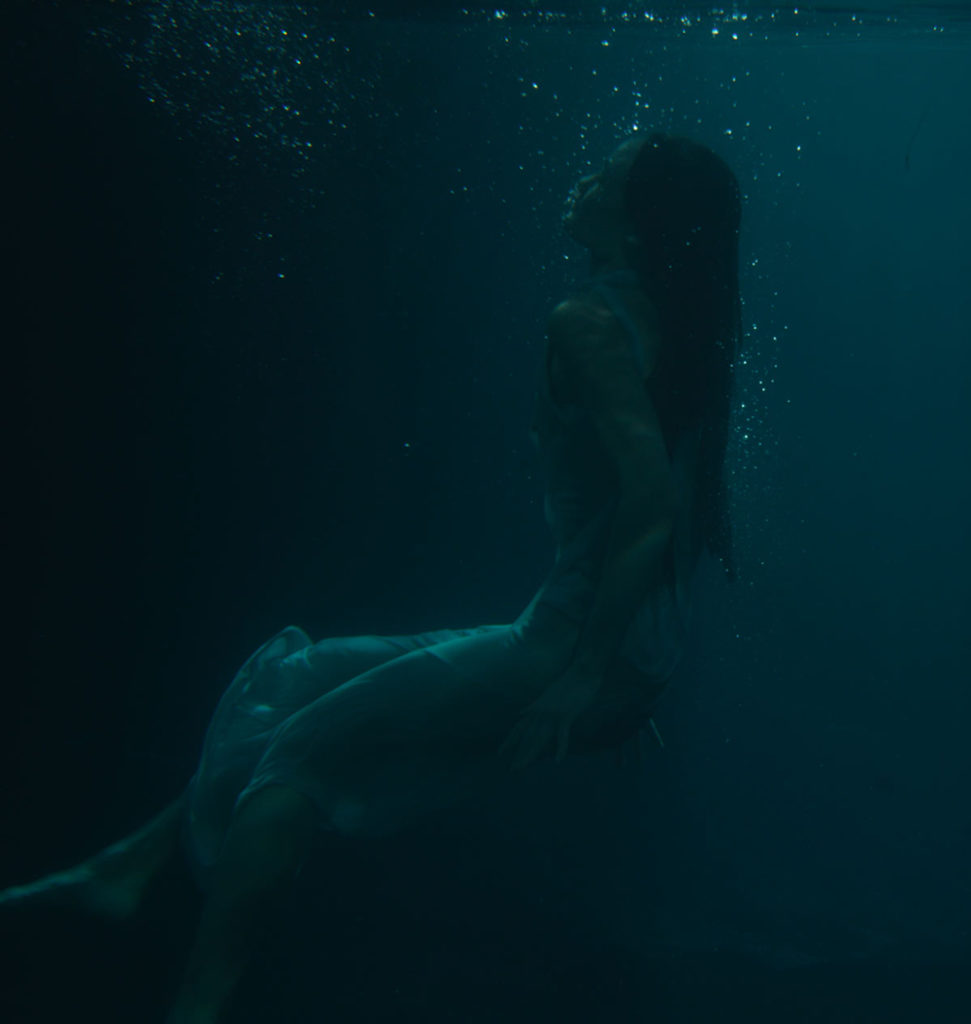
Ghost Train underwater portrait.
“In further work we’d love to do data mapping and emotional mapping, to gauge the effect of the ride on the emotional wellbeing of the audiences. We’re very much focused on ethical technology as a concept. With culture now, our online presence has as much if not more presence than our IRL (in real life) presence, and being aware of the pros and cons of that is important; obviously everyone’s narcissism (on social media) is off the hook yet there’re huge connection possibilities so it’s a double-edged sword. A goal for those who ride the
Standish is readily aware of how a painful past can linger into the present. Just a few months after the death in December 2009 of key collaborator, Rowland S. Howard, Jonnine and her HTRK colleague, Nigel Yang, were rocked by the suicide in London of their close friend and fellow band member, bassist Sean Stewart, after years living and working together in Berlin. Jonnine and Nigel returned to Australia soon afterwards and HTRK continued on as a duo.
Did she and Nigel never get the urge to just close off HTRK and start something else – like when Joy Division became New Order – simply as a means of moving on, so you don’t have to think about (Sean’s death) all the time?
“Look, in retrospect that would probably have been the best thing because sticking with HTRK after Sean died really did a number on me personally, and on Nigel too. It was very hard, especially touring the (2011) album Work, which were the last songs that Sean contributed to and played on.”
“We toured that around the world and the heaviness was intense. Even though we wanted to celebrate Sean’s work and bring it to people as a tribute to him, actually doing that was very difficult for us. HTRK became an emotional slog. Nigel and I knew we’d keep making music together but when we thought about changing the name, HTRK seemed to be a special thing to a lot of people we know and care about, so we decided to push forward.”
“Psychic 9-5 Club [their next album, released 2014] felt much more cathartic, our intention was that it would give us a new mood and a freedom from that time. But there was still a heaviness that we found impossible to get away from. It’s now been seven years since Sean died and, well… I’ve read about DNA and that it takes seven years for your body to change and to shed your old cells. I wonder if that’s part of the reason Nigel and I have been so prolific recently and have felt such relief working on our new songs over these last six months; HTRK now feels right, like it’s just me and Nigel in our lives right now, without all the pain and emotional baggage. It’s almost like a kind of sex chapter, you know when someone’s libido comes back finally after a significant trauma?”
Standish and Yang have recorded enough material for a new, soon-to-be-released 4-track EP, with an album to follow later in 2018. “Our new music is less introspective, more physical,” she says, continuing the HTRK tradition of each LP signifying a different chapter, for a different potential audience.
“Work was made to be heard together by a group of friends”, she explains, “lounging around on a bed in someone’s flat in the early hours of the morning, eating Doritos, laughing and kissing each other. You know, the classic ‘back to mine’ early a.m. experience with good friends. Whereas Psychic 9-5 Club is much more personal, you’d listen to it on your own on headphones. It’s a record that’s about helping you move from a dark place back into the light, it’s very personal in that respect. From the feedback we’ve had, it seemed to really help some people through transformative times and trauma. Hearing that from people meant so much to Nigel and I, we felt so much gratitude and empathy, and it encouraged us to keep HTRK going.”
As well as HTRK, Jonnine is also working on solo music for future release; that is when she’s not working various day jobs, including one of her most exciting recent career opportunities. “I worked a six month-contract as Creative Director of Melbourne Fashion Week 2017 which was really great fun.”
“It was the first time I’d done anything like that, though I’ve always worked as an art director and designer, that’s what I studied at Uni and has generally paid my bills, I do all the artwork for HTRK and things like that… In some ways it was kind of effortless because there are so many amazing creative people here doing quality work, that all I had to do was just bring them together and give them a platform to do what they do best and own it.”
“Fashion is a part of all I do,” she says. “Because I think of fashion as curiosity, as humour, as myth. I think that’s a common thread with everything I do actually, combining the mythological world with the worlds of technology and fashion. That’s the same in my design, my music, all of it.”
“So how that works for something like Melbourne Fashion Week is that I saw spring as the most mysterious of the seasons, with its own myths and compulsions. It’s the time when sacrifices were traditionally made to the gods to help crops grow, but it’s also the time for a bit of personal madness, when you get a massive crush on someone and go a bit crazy. We were really enjoying playing off the mysterious energy of the season and that ran through everything we did, whether visuals or sound.”
Jonnine mentions a recent turn of events for HTRK, revealing her current fashion interests to be less thematic and more pragmatic. “I live outside Melbourne in the Dandenong Ranges but Nigel has lived in Sydney for the last few years, in Redfern, so making music together every month has taken a lot of effort. But he and his family have just moved to Melbourne too, which is amazing because it will help us give HTRK renewed attention as well as saving us a hell of a lot on flights! I’m actually just looking forward to buying a pair of new shoes for once, instead of another flight to Sydney.”
Ghost Train is at the Festival Village in Hyde Park, Sydney until 28 January 2018 (closed Mondays). Tickets are $10.


